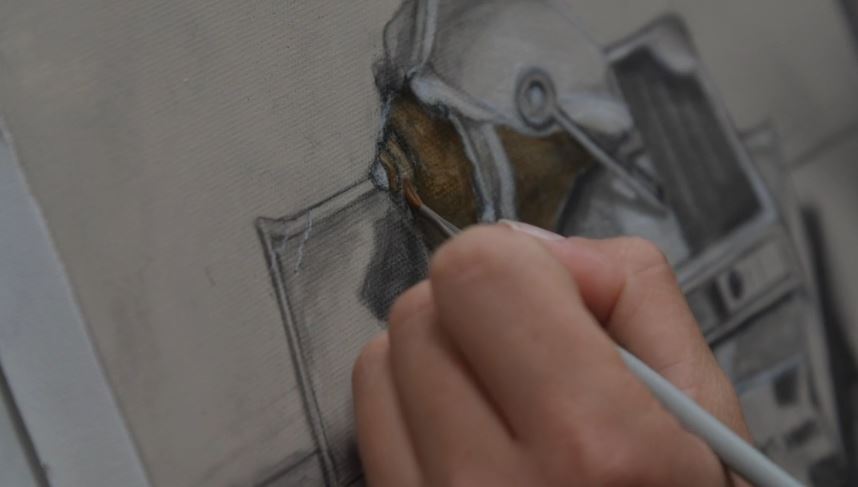New York Times Article: Using Arts Education to Help Other Lessons Stick
The arts can be a source of joy in a child’s day, and also come in handy for memorizing times tables.
In “A Tree Grows in Brooklyn,” Betty Smith’s 1943 autobiographical novel about growing up poor in the early 20th century, the public school that the heroine attends is a pretty bleak place. But “there was a great golden glory lasting a half-hour each week when Mr. Morton came to Francie’s room to teach music.”
He taught them classical music, the book continues, without telling them what they were learning, setting his own words to the great works. “Little boys whistled part of Dvorak’s New World Symphony as they played marbles. When asked the name of the song, they’d reply ‘Oh, “Going Home.”’ They played potsy, humming ‘The Soldiers’ Chorus’ from Faust, which they called ‘Glory.’”
Francie also looked forward to the visits of the drawing teacher; “these two visiting teachers were the gold and silver sun-splash in the great muddy river of school days.”
Arts education in schools has introduced many children to great painters and great music, and helped them through their first dance steps or tentative musical endeavors. It can serve as a bright spot in the schoolchild’s day or week, a class that brings in beauty, color and joy, and which is not about testing.
Arts education encompasses many disciplines: “I’m talking about everything from music, drama, dance, design, visual arts,” Dr. Sowden said. And the goal goes beyond the specific subjects, he said: “You’re looking for opportunities in the arts education context to encourage children to ask questions, to use their imaginations, but also to approach their work in a systematic, disciplined way.”
When children are younger, arts education helps develop their capacity for collaboration, for creativity, and even for asking questions. As they get older, he said, “their executive function is much more developed, their ability to sustain attentional tasks is much greater.” For them, arts education can offer the chance to refine and polish a skill over time, or revise a project until it is as good as it can be.
Sometimes the arts are taught in a very set curriculum, Dr. Sowden said, but there are real advantages to teaching in a more exploratory way, where children can experiment. And both parents and teachers can encourage children to explore, he said; “that’s the way you get the biggest benefit, not just learning to reproduce a particular work by Monet or dance sequence.”
The skills that children master in arts education, he said, may be transferable to other curricular areas.
Mariale Hardiman, a professor at the Johns Hopkins School of Education, where she directs the neuro-education initiative, was interested in how children do — and don’t — retain what they learn in school. “A lot of the information we teach doesn’t stick.”
What she saw as a school principal, she said, was that when arts were integrated into the curriculum, “learning became more visible.” Teachers told her “the children would remember the information better when they taught it through the arts.”
So though arts education has many other benefits, she said, such as creative thinking, her studies have focused on children’s memory for academic subjects, comparing what children remembered 10 weeks after material was taught. Researchers wrote two different versions of the curriculum, matched for content and timing, both involving active learning, but one including arts education. For example, in an arts integrated curriculum, students would sketch their vocabulary words, or learn some of the material as songs, or act out molecular motion with their bodies.
The children who had learned the material in the curriculum that made use of the arts remembered more, and the effect was largest among the children who were less strong academically, the “lower performers.”
“We found the biggest difference with children at the lower level of achievement,” Dr. Hardiman said. “Could this be at least one lever for closing an achievement gap?” After all, these are often the students who are condemned to dreary drill and repetition, in hopes of bringing them to a higher level: “What if the arts are a lever of school reform, better than the drill and kill we do with remedial students?”
In a 2019 article in the journal Trends in Neuroscience and Education, Dr. Hardiman and her colleagues described the results of a randomized controlled trial looking at fifth-graders who were taught science content, some using techniques from arts education, and others with more conventional instruction. The researchers again saw an effect on the students with more limited reading skills; they remembered more science if they had learned with the integrated arts methods.
So why might the arts integration help children’s memory? “Arts allow for elaboration, allow for repetition,” Dr. Hardiman said. “Memory is certainly enhanced through repetition, the more you revisit something, the more you remember it.” And the visual and performing arts also allow children to elaborate in creative ways on the material.
The advantage of learning through the arts will come as no surprise to anyone who grew up with the “Fifty Nifty United States” song or learned how a bill becomes a law from Schoolhouse Rock. Some of today’s children are learning history from the lyrics of “Hamilton.”
I suddenly remembered a rather mournful tune from decades ago, in high school, when a science teacher told us we would be tested on the elements with a charge of positive 2 and a friend and I set them to a chant; I can still name them, in order, and when it comes to chemistry, I am definitely one of the less able students.
“Arts integration should not replace arts education,” Dr. Hardiman said. She suggested a “three-legged stool,” with one leg being arts education, including dedicated classes in visual and performing arts, and the second arts and cultural offerings, such as artists coming into the school or visits to museums. The third leg would be the integration of the arts into the teaching of other subjects.
“Parents can easily do simple arts activities with kids,” Dr. Hardiman said, and can incorporate these ideas around homework or just in spending time together. Maybe it would help to put the multiplication tables into a song, or ask children to sketch their ideas, or use body poses to show the emotion that a character in a story is feeling.
Ronald Beghetto, a professor of educational psychology and the director of Innovation House at the University of Connecticut, studies creativity in educational settings, which, he said, “can be manifest across all different disciplines.”
“We tend, as adults, to overplan and overstructure young people’s experiences,” Dr. Beghetto said. While structure is important, he said, so is “letting kids determine their own problems to solve, their own ways to solve them.”
Arts education, he said, can provide those structured opportunities that foster creativity.
“Working through some creative endeavor, we’re really resolving uncertainty,” he said. “We approach the blank canvas.”

